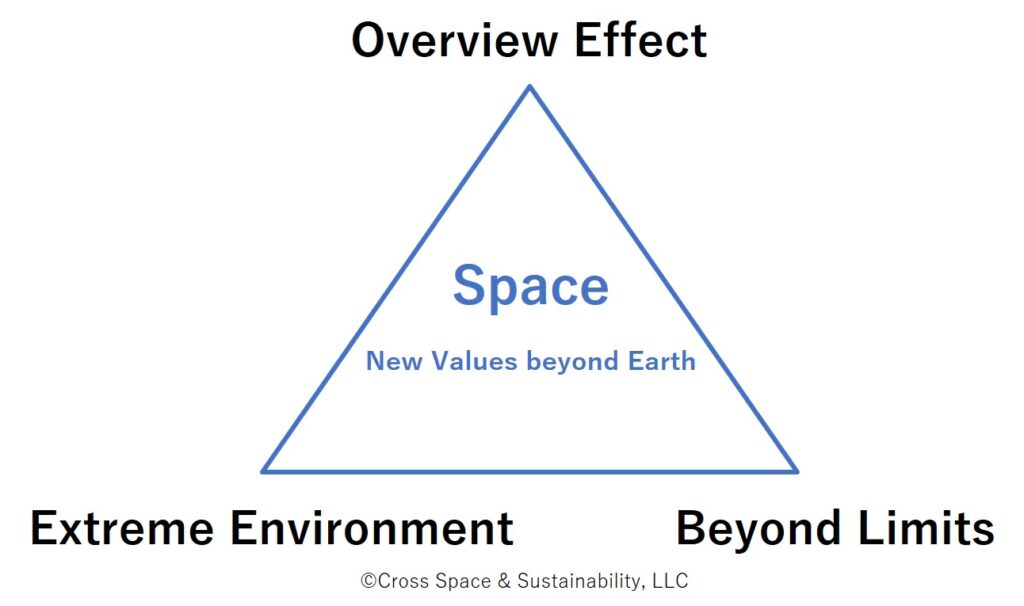The Sustainable Development Goals (SDGs) were adopted by the United Nations General Assembly in 2015 as common goals for all humanity on Earth. How, then, does space contribute to the achievement of the SDGs?
Space offers three major types of “new value that do not exist on Earth,” and these values are generating innovative solutions that help address challenges on the ground.

1.Overview Effect
By viewing Earth from space, humanity has gained a new perspective. The global photograph of Earth taken in 1972 by the Apollo 17 astronauts left a profound impression on people—not only by revealing the planet’s beauty, but also by showing the paper-thin atmosphere and the fragility of Earth’s environment. This image has been widely used in environmental protection movements.
It is often said that seeing Earth from the outside leads to an awareness that all life is interconnected, fostering a sense of responsibility to protect the global environment¹. As space tourism becomes more widespread, not only astronauts but also many ordinary citizens will be able to have such experiences.
In addition, various solutions have emerged, including technologies for large-scale observation of Earth’s environment from space and for positioning and managing human activities on the ground using space-based systems. Furthermore, communication and broadcasting satellites that connect the world from space—enabled by low Earth orbit satellites providing low-latency, high-capacity internet access and the recent introduction of direct connectivity with smartphones—are expected to contribute to reducing the digital divide.
2.Extreme Environment
Space allows us to utilize environments that cannot be obtained on Earth, or that are extremely difficult to realize there. For example, the microgravity environment used for life sciences and materials research aboard the International Space Station (ISS) cannot be stably achieved on the ground.
Likewise, environments that are commonplace in space—such as high vacuum and extremely low temperatures—are highly useful for applications such as semiconductor development, yet are difficult to maintain continuously on Earth. On the ISS, in addition to the development of pharmaceuticals and new materials and the cultivation of iPS cells using microgravity, efforts have begun to manufacture products that are difficult to produce on Earth, such as high-performance optical fiber ZBLAN².
More recently, new applications have also been proposed, including space-based data center concepts that take advantage of extremely low-temperature environments.
3.Beyond Limits
In space, constraints that are taken for granted on Earth—such as gravity and atmosphere—do not exist. Thinking from the perspective of space allows us to reconsider Earth beyond the many limitations that bind us and to create solutions from entirely new viewpoints.
For example, research and development are underway on energy-efficient, circular ecosystems based on hydrogen produced through the electrolysis of Lunar water, in order to support activities on the Moon, where fossil fuels are unavailable. Because the cost of transporting payloads from Earth to the Moon is extremely high, it will be essential to construct ultimate resource-saving and reuse-oriented systems that recycle and reuse imported materials to the greatest extent possible.
These outcomes are expected to be applied on Earth in the future, making significant contributions to the development of a circular economy.
Reference documents:
- Frank White: Overview Effect (4th Edition), 5, Multiverse Publishing (2023)
- National Aeronautics and Space Administration (NASA): Optical Fiber Production, https://www.nasa.gov/missions/station/iss-research/optical-fiber-production/ (2024)
